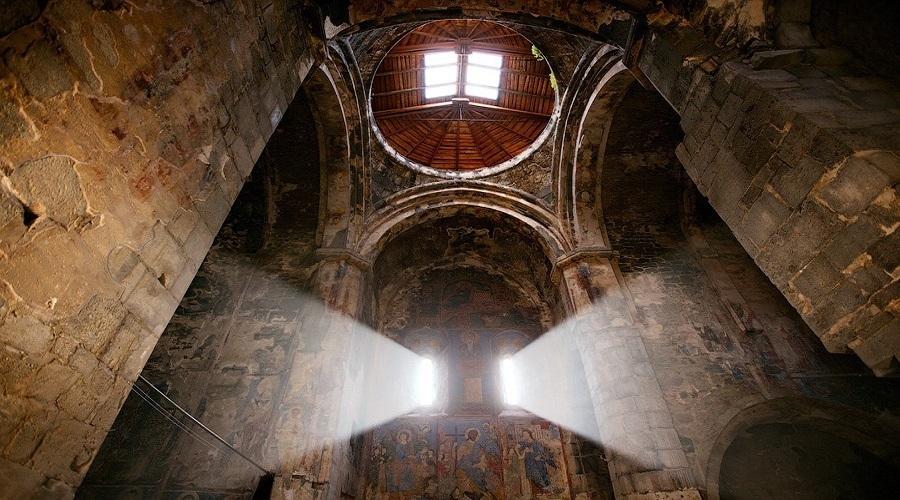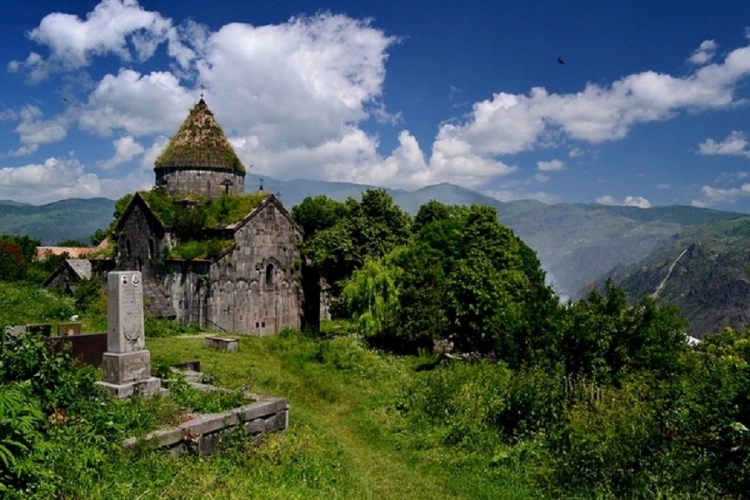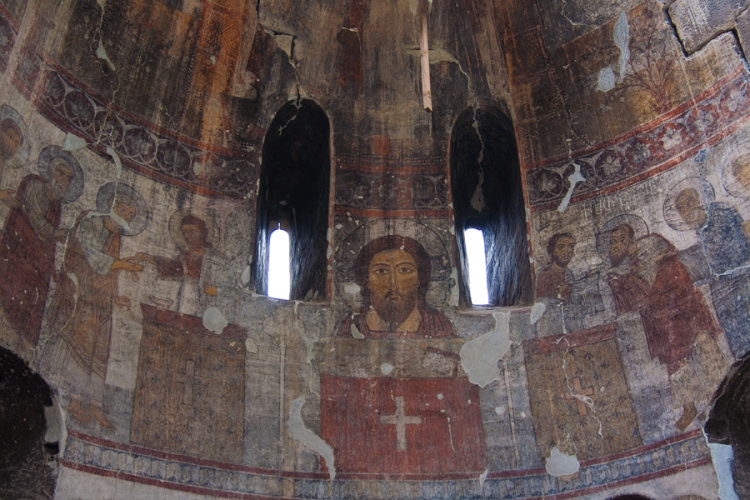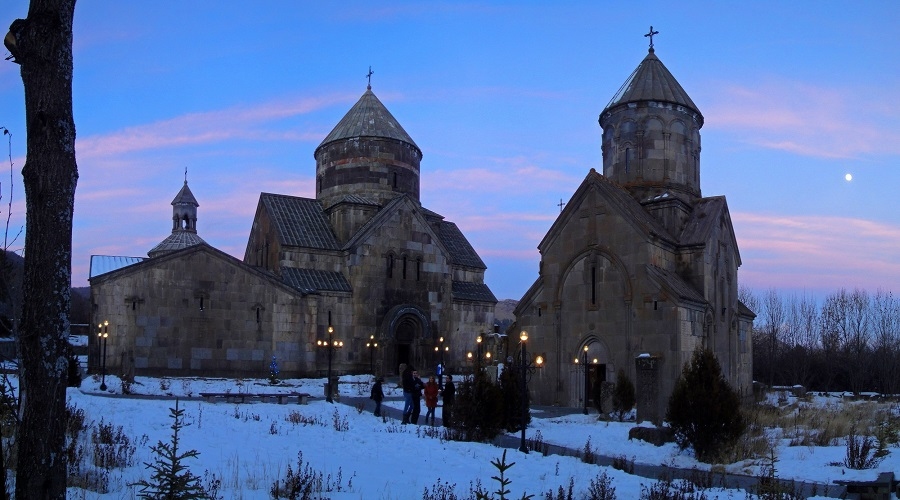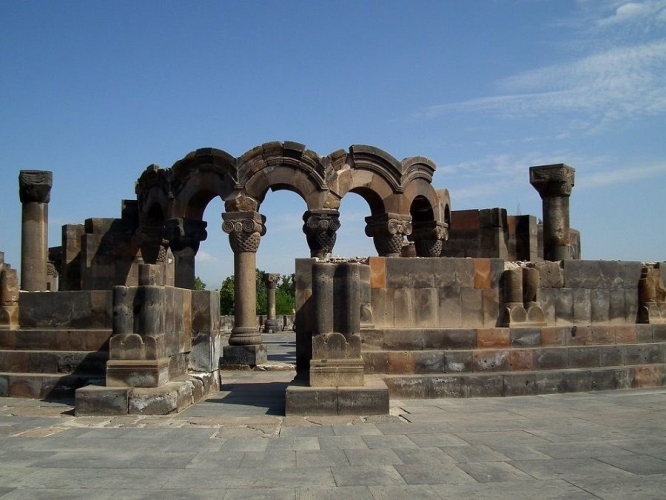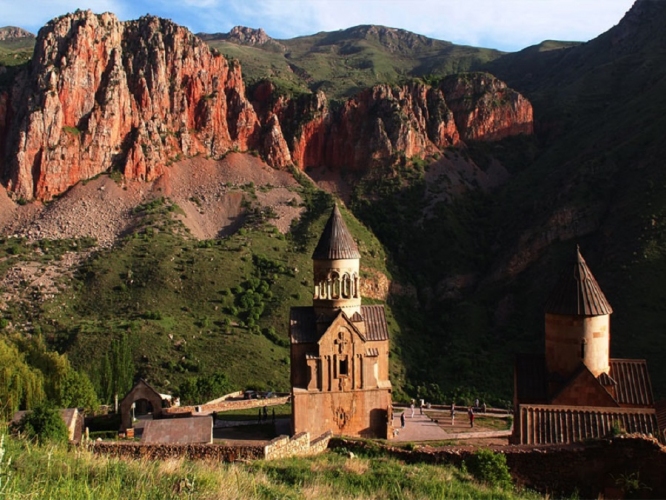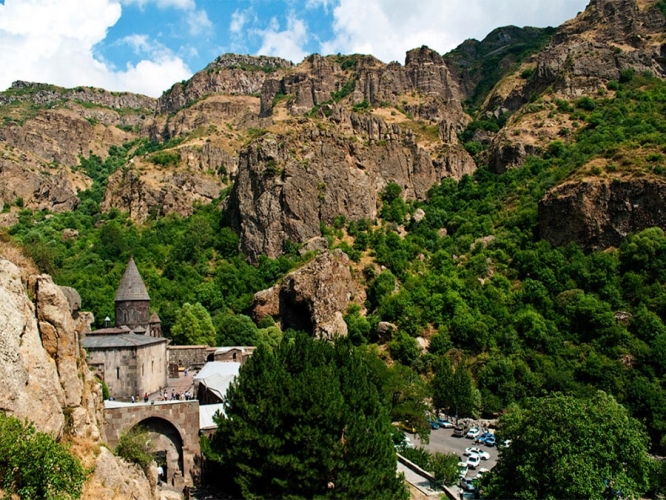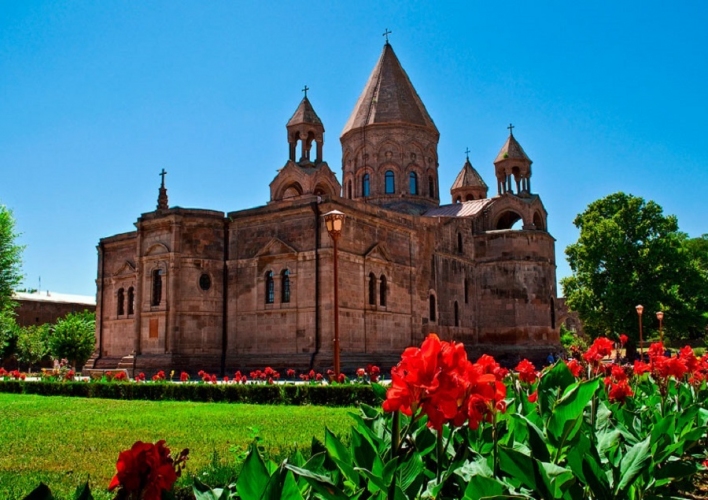Day 1. City tour
Yerevan - Matenadaran - City tour - Tsitsernakaberd - St. Grigor the Illuminator Cathedral Arrival in Yerevan. Meeting at the airport and transfer to the hotel. After accommodation and a short rest you will have a sightseeing tour around our colorful and hospitable Yerevan. You will visit Matenadaran - the Museum of Ancient Manuscripts and Armenian writing, you will also see the Grand Cascade architectural composition and the statue of Mother Armenia in Victory Park. Further, the tour will continue to the heart of Yerevan - the Republic Square, surrounded with pink tuf buildings. Next point is the Cathedral of St. Grigor the Illuminator. The city tour will end with an excursion to the museum of the great Armenian - Sergei Parajanov, an outstanding avantgarde producer who brought plenty of innovations to the cinema. Return to the hotel.
Day 2. Echmiadzin - Zvartnots
Echmiadzin - Zvartnots - St. Sargis Church In the morning, after breakfast we start a trip to the most sacred place for all Armenians, the Armenian Vatican - Etchmiadzin. Etchmiadzin is the official residence of the Catholicos of All Armenians, the supreme head of the Armenian Church. Since 1441 the Mother See of Holy Etchmiadzin has been the administrative headquarters of the Armenian Church. The word “Echmiadzin” translated from Armenian sounds like "Descent of the Only-Begotten". Many significant Christian shrines are kept in this place: a spear piercing Christ, a particle of Noah’s Ark and the Right Hand of St. Gregory the Illuminator. You will also see the St. Gayane Basilica of the year 603, the church of St. Hripsime of 618 and the later church of St. Shokagat. All these churches, together with the main cathedral of Echmiadzin, are included in the UNESCO cultural heritage list. On the way back - visit the ruins of the ancient Zvartnots Cathedral and upon arrival in Yerevan - visit the church of St. Sarkis, which was built over the Hrazdan Gorge, from where a wonderful view of the Victory Bridge opens. Return to the hotel.
Day 3. Khor Virap - Noravank
Khor Virap - Noravank Breakfast in the hotel. The excursion will start with a trip to the roots of Christianity, the monastery of Khor Virap, which keeps the history of Christianity adoption in Armenia: according to legend, here in a deep pit, Grigor the Illuminator was imprisoned for 14 years. The name of the monastery - “Khor Virap” is translated as "deep pit". This monastery was built on the site of Artashat , the ancient capital of Armenia; the oldest building of the monastic complex, the chapel of St, Grigor, was built in 642. The complex also includes the Church of the Holy Mother of God, which was built later. A magnificent picture opens from the walls of Khor Virap fortress - proudly standing magnificent Mount Ararat - the symbol of the Nairi Country. The next holy place to visit is Noravank Monastery, located among the picturesque red rocks of Vayots Dzor in the gorge of the Arnie River. Its name is translated from ancient Armenian as "New Monastery". It was built in the 13th century, by great masters. Noravank has been a major religious center in Armenia for many years. The monastery complex includes the Surb Karapet, St. Astvatsatsin churches with exquisite decoration of the facade and the Surb Grigor chapel. Several khachkars that have survived on the territory of Noravank are also amazing. The most famous and most beautiful of them belongs to the work of the famous master Momik. Return to Yerevan.
Day 4. Kobayr - Sanahin - Haghpat - Akhtala
Kobayr - Sanahin - Haghpat - Akhtala In the morning after breakfast we will proceed to Lori region, which is rich in churches and monastic complexes. The first church to visit is Kobayr monastery. Kobayr monastery was built in 1171 on the high slopes of the gorge over the Debed river by order of two sisters, Kyurikyan Princesses. The monastery was severely damaged by an earthquake and now it is an impressive architectural structure consisting of a bell tower-tomb, a chapel, cross-stones and the remains of the fortress walls with unique frescoes of the Virgin Maria and the Saints’ figures. The next points of our pilgrimage tour are the monastic complexes included in the list of World Human Heritage by UNESCO - Sanahin and Haghpat, located near the town of Alaverdi. Sanahin Monastery, located in a small village by the canyon of the Debed River, covers an area of about 2 hectares. The legend says that it is the place where century Grigor the Illuminator laid a stone cross in the 4th . The largest monument of Sanahin complex is the Church of Amenaprkich. The main sight of the church is considered a group sculpture of Kings Kyurike and Smbat - holding the model of the church. In 1061 the small chapel of St. Grigor was built to the East of the Church of the Virgin. We have no information when the Haghpat Complex was built exactly. Haghpat Monastery is located in the north-east, not far from Alaverdi town. According to historical documents Haghpat was built in the middle of the 10th century. Over the course of three centuries, several churches, chapels, bell towers, book depositories, bridges, galleries and many residential and office buildings have been built here. Further along the route - Akhtala Monastery, which is located near the city with similar name on a high ledge of the mountain. Akhtala was founded in the 10th century. as one of the defensive structures and until the 14th century. was called Pghinza-hank, which means "copper mine" in Armenian. In the XI century Akhtala citadel was an important strategic point of the kingdom of the Curicids. At the beginning of the 18th century. Akhtala Monastery came to complete desolation. And when in 1801 the Russian emperor Alexander I issued a decree on the transformation of the monastery into the center of the Greek Orthodox Church in Transcaucasia, Akhtala became the most important place of pilgrimage for the Greeks. Every year on September 21, they come to Akhtalu to celebrate the feast of the Nativity of the Virgin. Return to Yerevan. Return to Yerevan.
Day 5. Kecharis - Sevan - Goshavank - Haghartsin
On this day, you will get acquainted with most beautiful monasteries, which are located in wonderful picturesque places in Armenia. Drive to the resort town of Tsakhkadzor to visit Kecharis monastery. This is an ensemble of ancient buildings and a classic example of medieval Armenian architecture. The monastery complex consists of four churches, two chapels, an ancient cemetery with cross stones - khachkars – of the 12-13th centuries. The construction of Kecharis monastery began in the 11th century. But it was completed only in the middle of the 13th century. The tour will continue to Dilijan, where 18 kilometers away monastery complexes of Haghartsin and Goshavank are located in a picturesque valley. Haghartsin is a complex of buildings, and is considered as a monument of medieval Armenian architecture. The earliest monastic buildings date back to the 11th century. Goshavank Monastery is a medieval monastery complex of the 12-13th centuries. It is located on the 20th km to the east from Dilijan, in the village of Gosh, among the village houses and mountain rivers. The monastery was founded by an outstanding theologian and priest Mkhitaryan Gosh, with the assistance of Prince Ivan Zakaryan. For many centuries Goshavank monastery was one of the main religious, cultural and educational centers in medieval Armenia. The next stop is at the Lake Sevan, where you will see one of the main sights of this region - Sevan Monastery, built in 874. Return to Yerevan.
Day 6. Gegard
Last monastery that you visit during our religious tour will be the Gegard monastery, one of the largest complexes in Armenia, and perhaps the most beautiful monument of cultural heritage of mankind. The monastery was founded in the 4th century on the site of the cave mountain spring, and it gave it the first name: Ayrivank "Cave Monastery". According to legend the present name Gegardavank "Monastery of the Lance" got after apostle Thaddeus had brought the spear of Longinus to Armenia (Now it is kept in Echmiadzin). Some parts of the monastic buildings were carved out in the rock. Geghard monastery as well as surrounding gorge are included in the list of World Human Heritage by UNESCO. Return to Yerevan. Depending on your departure - transfer to the airport.
The program includes:
- All transfers
- All excursions
- Guide service during the whole program
- Accommodation in hotels 3 */ 4 */ 5 * in Yerevan (5N)
- Entrance fees to the Matenadaran and Zvartnots

